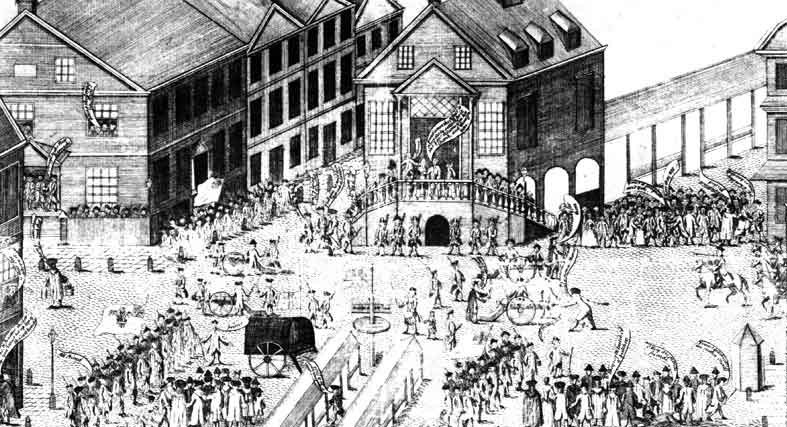The Paxton Boys were known as a vigilante group who had been responsible in murdering twenty Native Americans. This event is sometimes referred to as the Conestoga Massacre.
Fear
It all started when Presbyterian frontiersmen of Scots-Irish descent went into the Paxton Township in central Pennsylvania, decided to band together and form a vigilante group to respond to the fear and the hatred of American Indians that slowly crept throughout the land. The fear was largely brought about by the events that defined the French and Indian Wars and further exaggerated by Pontiac’s Rebellion.
Also adding to the pressure that blew the lid wide open was the sense that the government of the colonial Pennsylvania was being negligent to the brewing matter, as it continued to use the tax money to provide aid to the Native Indian population living amongst them. Back then, most people had thought that savage Presbyterians did the killings themselves because they thought they were the predestined elect and the victims were just the heathens.
Not so neighborly
The village of Paxton became known as a hotbed for political and especially racial unrest at the time of the war that was Pontiac’s Rebellion. It was heavily populated by rough Scots-Irish immigrants who were totally weary of the issues of the day, and the lack of conviction for the part of the colonial legislators. On Dec. 14, 1763, a group of men took the matter with their own hands and raided the neighboring Conestoga Indians in the Lancaster County. Their actions were totally misplaced as the natives had lived and co-existed with their neighbors for a very long time, and they had not participated in anything that has to do with the uprising of Pontiac’s Rebellion. It resulted in six Indians dead, and another 14 more taken captive; unfortunately all were murdered some weeks later.
This prompted the governor to call for the arrest of the perpetrators, but some sympathetic to the Paxton Boys refused to assist in the arrest.
More trouble
There are other events that contributed to the notoriety of the vigilante group. In one instance, a certain group of the Paxton Boys would march into the capital. Estimated to number from 600 to about 1,500, this mob would ignite panic all throughout. They would face a group of pacifists armed with muskets and cannons. Church bells would sound the alarm of the impending violence.
In another instance, a possible disaster was successfully averted when civic leaders including Benjamin Franklin consulted with the mob’s leaders. The march was then disbanded after an accommodation for both sides had been reached. The arrangement was to bring both the Paxton leaders and colonial officials on the table. It was then that grievances were heard on both sides of the line.
The actions of the Paxton’s boys led to two important things. First, it was seen as a measure of the hostilities that stood in between the Native American Indians and the frontiersmen. Most white settlers came to their own conclusions that both races could never live together in harmony, and that removal and possibly extinction would be the only possible solutions. The second important reckoning was the march on Philadelphia in January 1764, that only proved the reality of social tensions and its after effects.
